August 2002 - Tony Boyer School
Back to School - with Tony Boyer
Back in April, when I heard that Tony
Boyer was going to start teaching benchrest shooting,
I knew that I had to inquire. I called and left a message
on his answering machine and awaited his call. Once
he called, we worked out the details and arranged the
dates. I had attended the NBRSA benchrest school in
Michigan last year with my father, Leo, and looked forward
to sharing this experience with him as well. I scheduled
2 days with Mr. Boyer, one for my father and one for
myself. Mr. Boyers residence is much closer to us than
Michigan, too, which made it an easier trip.
Leo was first up, and I listened carefully and took
notes. Our first day started out with a session where
we got to ask our questions and get answers from Tony.
After we were through with our questions, he gave us
a list of Tonys rules. As he went down his list, I
was writing them down. Some clarification was sought
after some of the rules to further enlighten us. For
a complete list of Tonys rules, youll either need
to schedule a class with him or wait for publication
of his new book.
After we went through all of our questions and answers,
we started at the bench with our setup: the placement
of our equipment on the bench, the placement of ourselves
at the bench behind the gun, and the method of gun handling.
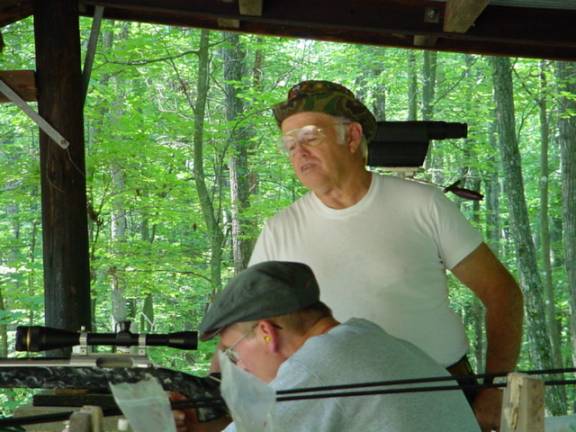
Leo needed to work up a load for his gun, since we just
screwed on a new barrel the week before. This was a
valuable exercise that I would put to use the next day
myself. Tony said within 12 rounds he could tell if
a barrel was gonna shoot. He shoots 3 shot groups to
work up a load. He suggested that we load 3 rounds of
52 clicks, 3 rounds of 53 clicks and 3 of 54 clicks
using n133 and a Harrells measure to throw charges.
We already had the brass prepped, primed and ready to
load. I loaded the prepped cases while Leo and Tony
sent them down range. Once the load was established,
53 clicks of n133 (00 lot 392) coupled with a 66 grain
Euber bullet (Myles die) Leo was set up to run some
groups watching the conditions.
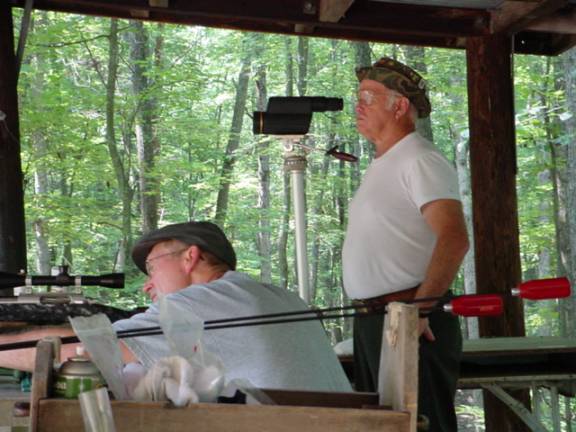
After we got ourselves set at the bench with our load
tuned, we discussed wind reading. Tony has a method
of running a group that he explained to us. He also
watches the flags to determine what condition he will
shoot and determines at what point to start shooting.
When it came time to shoot, Tony did a lot of watching
but allowed Leo to shoot the group before he would offer
any suggestions. After the group was complete, he would
ask what was done right or wrong. He would make suggestions
for improvement on the next group, maybe what condition
caused the group to open up or what flag to watch in
that condition. It was amazing to see how he watched
the conditions and he would tell us which condition
was friendly or which condition would allow enough time
to get off 5 shots.
A fair amount of time was spent working on running groups,
trying to improve upon speed as well as condition reading.
I could hardly wait for my time to come the following
day and even decided to shoot a couple of groups that
evening when my father was done.
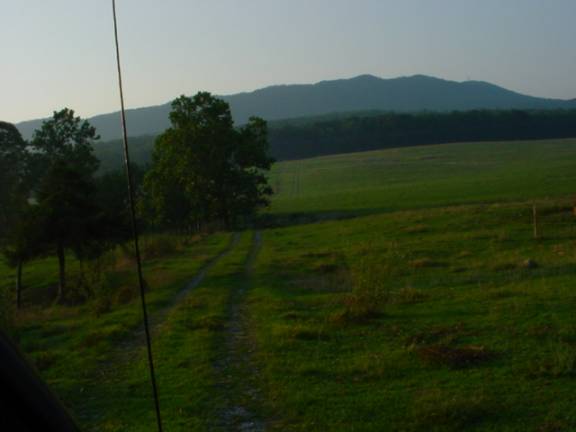
The next day would start early and a picture was taken
of the beautiful VA countryside on the way to the range.
Tonys range is a very peaceful place that is nestled
behind a livestock pasture on the side of a mountain.
A nice place to spend time, and indeed Tony has spent
some considerable time here.
At the beginning of my training day, I was shooting
something a little different than Tony was used to,
my .30BR.
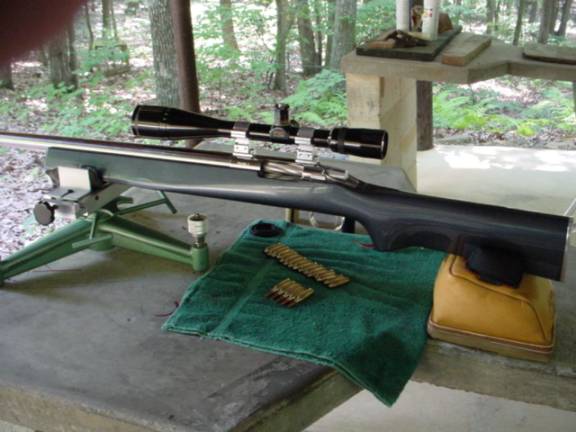
I started out shooting pretty decent groups with the
.30BR, but we did a little fine tuning and then I shot
a couple of impressive groups. The groups shot at the
top of the page below were shot after Tony suggested
dropping down half a number on the measure and decreasing
the bullet seating depth. It sure seems to have worked.
I think that Tony was impressed by the .30BR and certainly
a little surprised at the accuracy.
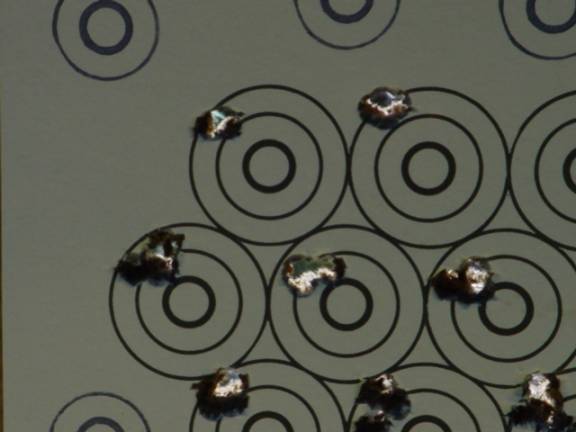
Then I switched barrels and broke in my new 4-groove
Shilen 6PPC barrel using the Tony Boyer barrel break-in
method, which consists of shooting 20 rounds and then
cleaning. I use the 20 cases that I needed to fire-form.
We started with the 3 shot groups, loaded at 52 clicks,
53 clicks, and 54 clicks. After shooting those, I loaded
up some more at 53.5 and 54 clicks. I shot those groups,
trying to shoot fast in the one condition. I was shooting
all using the same point of aim as Tony watched through
the spotting scope. The barrel shot great, and Tony
said that he had seen enough from that barrel to know
that I should take it off until I was ready to shoot
it in a big match.
For the remainder of the day, I asked Tony to set up
one of his guns to run a few groups so that I could
watch his bench technique. He brought out his HV gun
built on a Hart action, which he considers one of his
most accurate guns. I had never seen Tony at any of
the small matches that I had been to previously and
looked forward to seeing him run some groups. Below
is a picture of Tony shooting his HV gun.
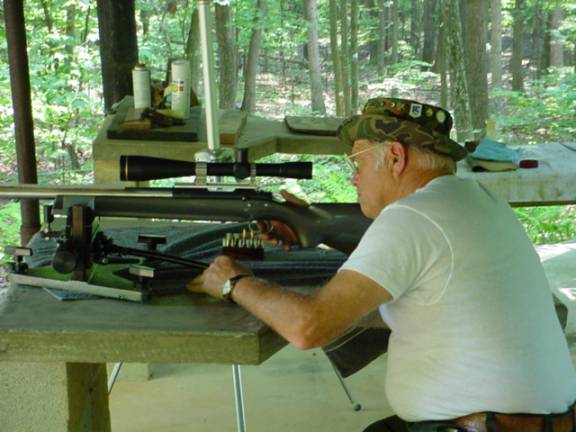
I found it very interesting to see him clean a new barrel
as well, using an ammonia solvent called blue goop which
is activated with hydrogen peroxide. I had never seen
anyone clean as aggressively as Tony does. He says the
more frustrated he gets, the harder he cleans. Id hate
to see that!
We didnt know what to expect when we headed out to
Keezleton, VA, to see Tony for advice about benchrest
shooting. I was so excited I couldnt even sleep the
night before we left. We knew about Tony Boyer everybody
in benchrest does but we didnt know Tony Boyer. In
fact, neither of us had ever met the man. All we knew
was the legend; the man who has won almost a hundred
hall of fame points!
We learned that the man is even more remarkable than
the legend. After all, how many other people that have
dominated their sport so completely, would take the
time to work with guys like us? Weve only been competing
for a couple years. Weve only been to a couple dozen
competitions.
Tony took us to his own personal practice range, the
place where he has spent 3 days a week for the past
20 years, practicing, studying, tuning, and reading
the winds.
Many times, when we would ask why one barrel or powder
or bullet or something works better than another, Tony
would answer, I have no idea why, but I know it does,
because Ive tried it. Other times his answer would
be, I dont know, maybe something else is better. Probably
something is better, but this is the best one Ive found
so far. A man who knows he doesnt know is a man who
is ready to learn. Tony is learning, maybe more than
ever, now that his eyes are not as clear, his hands
not as steady (so he says), and he can still win the
big ones.
Tony helped Leo understand what he would need to learn,
if he is to make the most of his own abilities in benchrest
shooting. His trigger pull is not smooth enough or consistent
enough. He needs to learn to shoot much more quickly,
and know exactly where to concentrate his attention
at each moment at the bench.
Up to now, Leos been a pure picker, waiting until
his condition comes around before he shoots, and checking
conditions closely before each round. Tony says you
can shoot some tight groups that way, but youll always
be struggling with the clock and often miss out on good
long letups. To be a consistent aggregate winner, Leo
needs to learn to shoot like a runner, trying to get
five shots off before the condition is lost.
The mechanical motions of unlocking, extracting, chambering,
locking, and returning to the aim point, while important,
are not the elements that require primary attention.
Seeing the wind conditions as they approach and sweep
across the range, seeing the patterns they form, recognizing
the cycles and anticipating the letup that will hold
long enough to give you 5 good shots these are the
most important things for us to learn.













